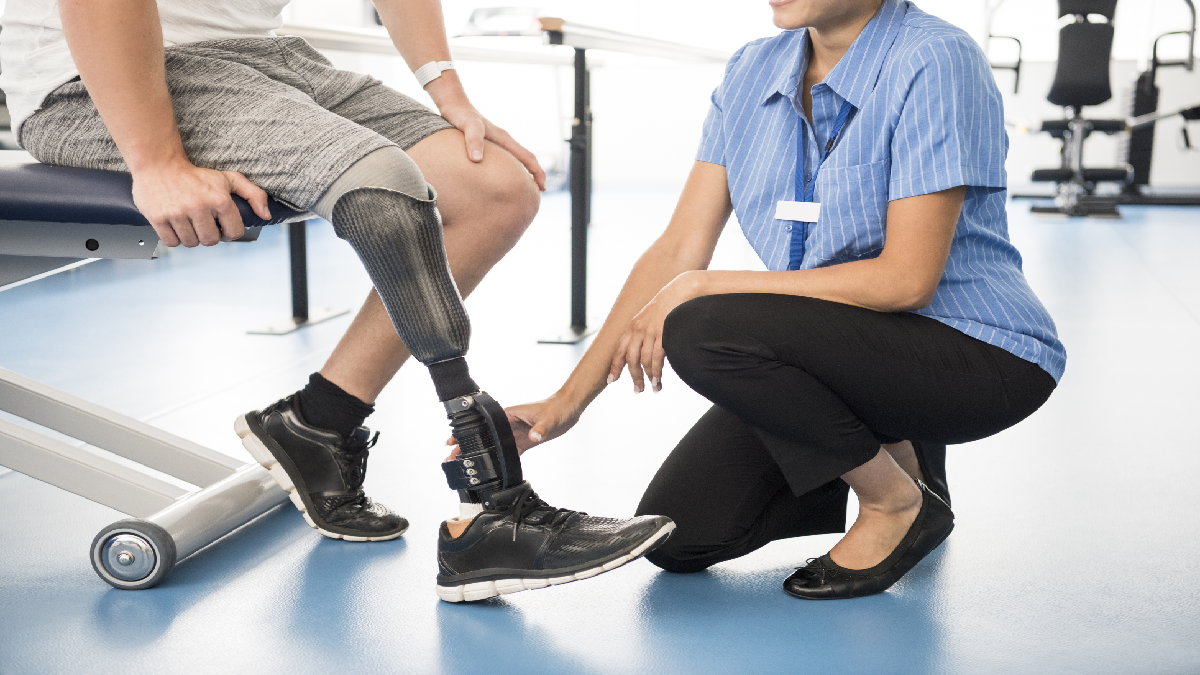No one likes to think about the possibility of losing a limb. Unfortunately, amputation injuries do happen as a result of accidents. In some cases, trauma to the limb ends up requiring its surgical removal. Other times, the separation of the limb from the body occurs in the accident itself. The prospect of either situation is enough to send fear and anxiety shooting through the mind and body.
As transportation accidents are some of the most common causes of amputation injuries, it is a very real possibility for an accident victim to suffer a loss of limb. On top of the physical and mental trauma an amputation injury victim can experience, there may also be an extended fight with insurance companies to get properly compensated for all accident-related losses.
The road ahead for amputation injury victims can be difficult. Our office is dedicated to lightening the burden they carry on this journey. You can count on us to diligently pursue your right to monetary compensation. Let us lighten your load. We fight the legal fights so that you can fight to get your life back on track.
Common Amputation Injury Sites
Amputation injuries are those that involve the removal of a limb, which includes the arm, leg, hand, or foot. Sometimes the entire limb must be taken, but doctors make every effort to save as much of the limb as possible. That is why amputations often occur at different locations of a limb. Some of the more common amputation sites for arms and hands include:
- At the shoulder
- Above or through the elbow
- Below the elbow
- Above or through the wrist
- Below the wrist
- Finger
Some of the more common amputation sites for legs and feet include:
- At the hip
- Above or through the knee
- Below the knee
- Above or through the ankle
- Below the ankle
- Toe
The Procedures and Recovery Process for Amputation Injuries
With amputation being such a serious situation, you can imagine that the amputation and recovery process can be extensive. The surgeon tasked with the limb removal will thoroughly evaluate the overall health of the patient as well as the extent of the damage to the limb. These factors will play a vital role in determining the specific site the amputation needs to be. After a comprehensive physical evaluation, the surgeon will often order a specific series of tests including CT scans, MRIs, and even a psychological assessment. The information gathered from these evaluations and radiographic studies will guide the decision as to how best to perform the amputation procedure.
The goal of amputation surgery is to preserve as much of the area as possible while removing the part that has been damaged beyond repair. Upon completion of the surgery, the doctor seals both the remaining nerve endings as well as blood vessels. As best as possible, the remaining muscle and bone at the amputation site will be reconstructed by the surgeon and shaped so that a prosthesis could fit comfortably. At the end of the procedure, the site will be covered with a stocking and, if necessary, a splint.
After this extensive surgical procedure, so begins the process of recovery. Physical therapy will play a critical role in the patient’s ability to transition to a post-amputation life. Additionally, psychological therapy is often ordered as losing a limb can be extremely traumatic. Some even experience persistent phantom pain where the removed limb used to be. For some, the recovery process will also include being fitted for a prosthetic limb and then practicing with the prosthetic limb. Continued health-promoting measures will also be recommended by doctors, including regular exercise and a healthy diet.
Economic and Non-Economic Damages
You would be hard-pressed to overstate the trauma associated with an amputation injury. The loss of a limb is not only painful but will have far-reaching and severe impacts on a person’s everyday life. When talking about the damages recoverable in an amputation injury case, it can be helpful to divide them into the categories of economic and non-economic damages.
Economic damages are those damages that are easily calculable. They are based on concrete numbers that come from things like medical bills and pay stubs. Medical expenses, future medical expenses, lost wages, and loss of future earning capacity are some of the more prominent economic damages.
Non-economic damages are also a critical part of being properly compensated for an amputation injury. Non-economic injuries are those that are not easily calculable. They are largely subjective and specific to the accident victim themselves. Non-economic damages will include things like pain and suffering as well as loss of enjoyment of life. Because of the psychological impacts of an amputation injury, non-economic damages can also be substantial and should be properly included in any personal injury award.
Contact Our North Dakota Amputation Attorney Today
Amputation injury cases are particularly devastating. To lose a limb can mean unimaginable life changes that you may not be prepared to face. We want to help you on your journey forward. This can start by working to secure proper monetary compensation to cover medical bills and expenses related to your amputation injury. Our goal is to take on the legal burden after suffering such a serious injury so that you can focus on yourself, your loved ones, and your life. Contact us today to schedule a free consultation.
